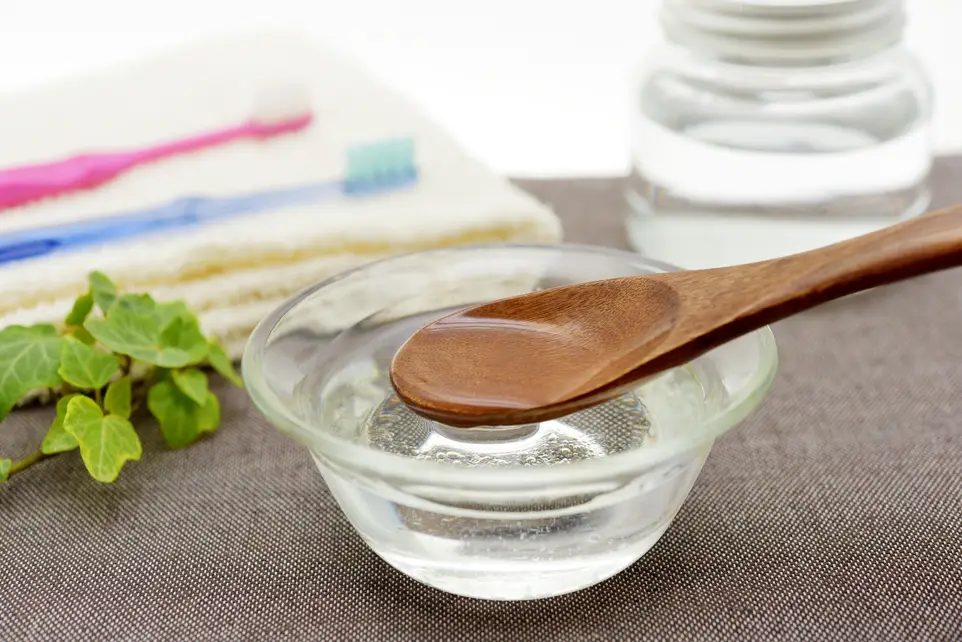What Is Oil Pulling? Complete Scientific Overview of Oil Pulling as an Ayurvedic Technique
Introduction
What is oil pulling?
Oil pulling is an oil-swishing practice done in the mouth for 10 to 20 minutes to improve oral health and detox the body, which can be dated back to the Ayurvedic tradition. Think of it as a natural mouthwash—but instead of chemicals, you’re using plant-based oils like coconut or sesame.
Why it’s trending again
This ancient remedy has made a significant comeback thanks to the natural health movement, influencers like Gwyneth Paltrow, and the rising demand for chemical-free alternatives to mainstream oral care.

History
Ayurvedic origins
Oil pulling, known as “Kavala Graha” in Ayurveda, dates back over 3,000 years. The ancient Indian system of medicine promoted it as a way to maintain balance in the body and remove “ama”—a toxic buildup believed to cause disease.
Traditional uses in India
It wasn’t just for oral health—Ayurvedic practitioners claimed oil pulling could cure 30 diseases, from migraines to diabetes. While that might sound far-fetched today, modern science is starting to examine it more closely.
How it Works
The mechanism behind oil pulling.
Swishing oil around your mouth acts like a magnet for bacteria, toxins, and debris, binding them and pulling them out when you spit.
What happens in your mouth?
Your saliva emulsifies the oil, which then traps pathogens and plaque. This mix gets thicker and milkier the longer you swish, indicating it’s doing its job.
Best Oils for Pulling
Coconut oil
Thanks to its antibacterial, antifungal, and antiviral properties, coconut oil is a hit among many and its lauric acid content plays a heavy role. Plus, it tastes way better than most other oils.
Sesame oil and sunflower oil
Sesame oil is the OG in Ayurvedic texts and is believed to have warming and healing properties. Sunflower oil is also a popular choice, especially in Eastern Europe.
Scientific Studies
Research findings
Modern studies, such as one published in the Journal of Clinical and Diagnostic Research, show oil pulling can reduce plaque, gingivitis, and the number of harmful bacteria in the mouth.
What the experts say
Dr. Bruce Fife, a naturopathic doctor and author of “Oil Pulling Therapy,” states that oil pulling can be “as effective as chlorhexidine,” a prescription mouthwash, but without the harsh side effects.

Benefits
Oral health benefits
- Fresher breath
- Whiter teeth
- Fewer cavities
- Reduced gum inflammation
Whole-body effects
While not fully proven, some users report clearer skin, improved digestion, and fewer headaches. Stronger form of evidence is still needed, but personal accounts do their job sufficiently.
Oil Pulling vs Mouthwash
Which is more effective?
Oil pulling may take longer but is gentler and often more effective than traditional mouthwashes. Unlike alcohol-based rinses, it doesn’t dry out your mouth.
Pros and cons of each
- Oil PullingMouthwash
- Natural ✅ ❌
- Kills Bacteria ✅ ✅
- Harsh Chemicals ❌ ✅
- Time-Consuming ✅ ❌
How to Do Oil Pulling Correctly
Step-by-step guide
- Swish one tablespoon of oil in your mouth.
- Swish gently (don’t gargle) for 10-20 minutes.
- Spit it into a trash can (not your sink!).
- Brush your teeth after rinsing with warm water.
Common mistakes to avoid
- Don’t swallow the oil—it’s full of toxins.
- Don’t swish too hard—it can tire your jaw.
- Never skip brushing afterward.
When and How Often to Oil Pull
Best time of day
Ayurveda recommends eating first thing in the morning on an empty stomach. That’s when bacteria levels are highest.
Ideal frequency
Daily is best, but even 3–4 times a week can yield benefits. Consistency is key.
Myths and Misconceptions
Common oil-pulling myths.
- “It whitens teeth overnight” — Not quite. It takes time.
- “It replaces brushing” — Not.
Separating fact from fiction
It is a complement, not a cure-all. Don’t ditch your dentist.

Risks and Side Effects
Who should avoid it?
People with jaw issues like TMJ or struggling not to gag may find oil-pulling uncomfortable.
Minor side effects
- Slight nausea at first
- Jaw fatigue
- Lipoid pneumonia (rare, from oil inhalation)
Who Can Benefit the Most from Oil Pulling?
Specific groups
- Smokers—It helps detox and freshen breath.
- Coffee lovers – Great for reducing stains.
Children and seniors
Kids over five can try it with supervision. For seniors, it can be a gentle alternative to strong mouthwashes.
Combining Oil Pulling with Other Oral Practices
Brushing and flossing
Oil pulling should never replace brushing or flossing. Think of it as an add-on, like toner, in your skincare routine.
Tongue scraping
For a complete detox, combine oil pulling with tongue scraping.
Personal Experiences and Testimonials
Real stories from real people
Many Reddit users swear by it to clear up acne, improve breath, and even reduce morning grogginess.
What influencers are saying
Wellness gurus like Shailene Woodley and bloggers like Wellness Mama have publicly praised oil pulling as part of their holistic lifestyle.
Conclusion
Oil pulling, while an ancient practice, is gaining recognition as a valuable supplement to modern oral hygiene. So, should you try it? Why not if you’re into natural wellness and don’t mind extra swishing time?
FAQs
1. Can oil pulling replace brushing your teeth?
Nope! Oil pulling is a supplement, not a replacement. Always brush and floss as usual.
2. How long does it take to see results from oil pulling?
Some people notice fresher breath immediately, but visible results like whiter teeth may take 2–4 weeks of regular use.
3. “What if I can’t swish for the full 20 minutes?”
Even 5–10 minutes is a worthwhile start. Build your way up.
4. Is oil pulling safe during pregnancy?
Yes, it’s generally safe—but always check with your healthcare provider first.
5. Is olive oil suitable for oil pulling?
Technically, coconut or sesame oil is preferred due to their antibacterial properties.
Learn more Cold Water Therapy: A Scientific Guide



